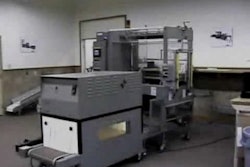Fresh produce rules, uhh, guidelines, aim to improve safety
The FDA issued a listing of new ways packagers can safely process and package fresh fruits and vegetables. Except they’re not rules as such, but guidelines.”
May 7, 2007
Machinery Basics
The AI revolution in packaging robotics is here
Robots that see variations, adjust grip pressure automatically, accept plain-English commands, and predict their own maintenance. Discover how AI is transforming packaging operations.
Read More
List: Digitalization Companies From PACK EXPO
Looking for CPG-focused digital transformation solutions? Download our editor-curated list from PACK EXPO featuring top companies offering warehouse management, ERP, digital twin, and MES software with supply chain visibility and analytics capabilities—all tailored specifically for CPG operations.
Download Now
Downloads
























